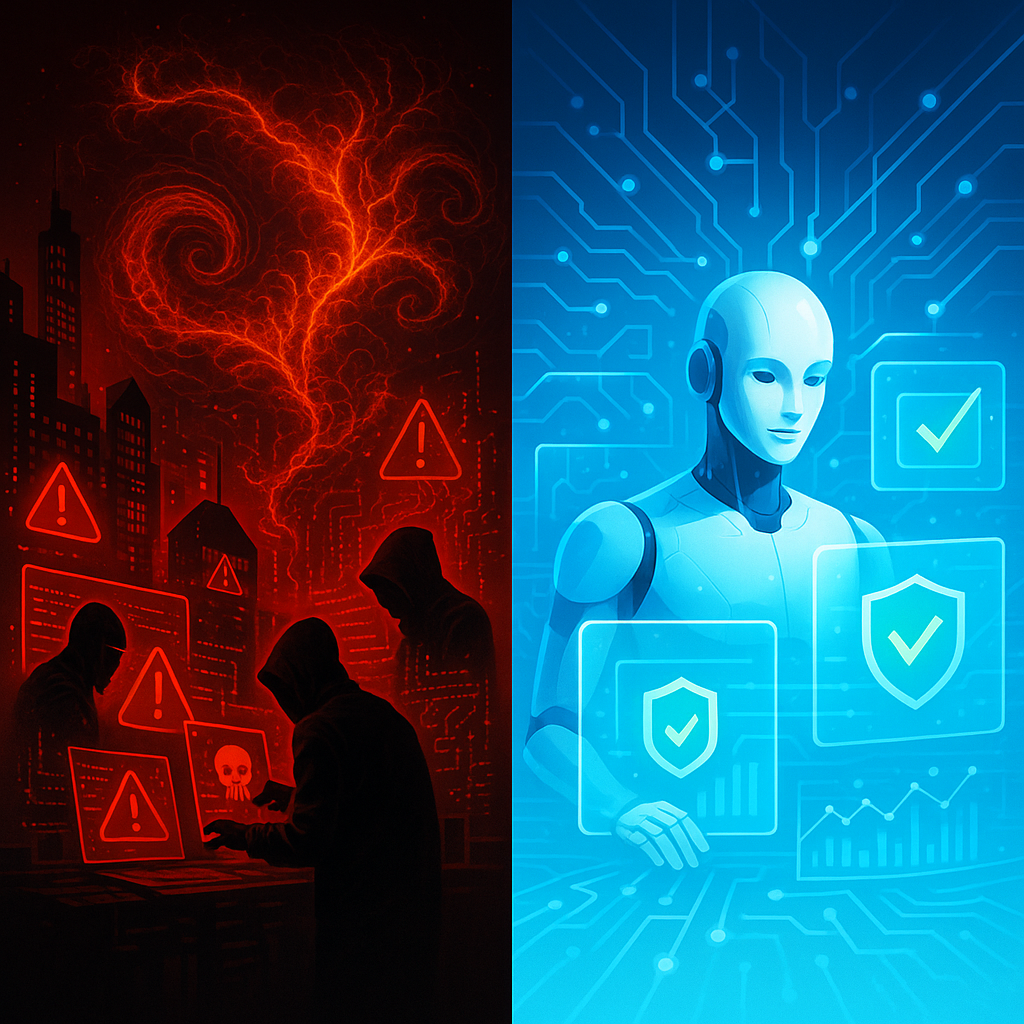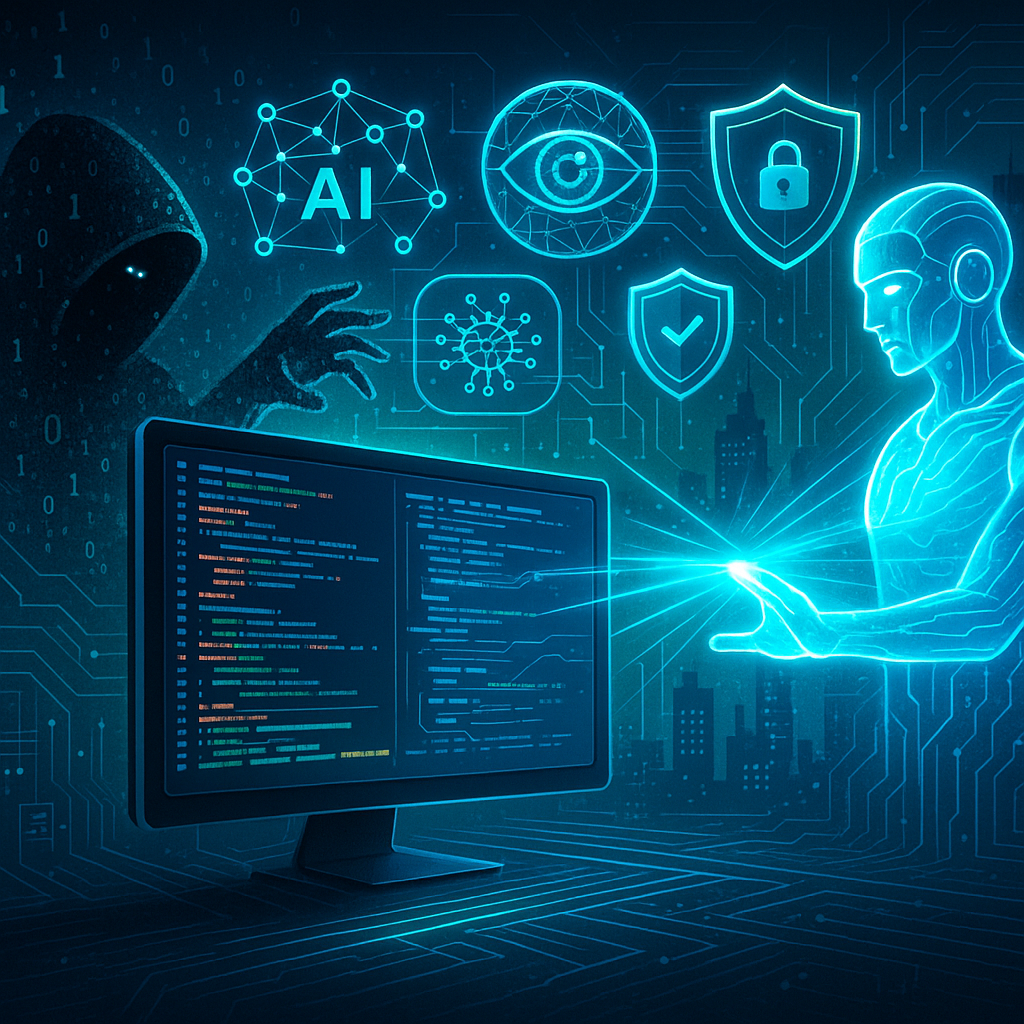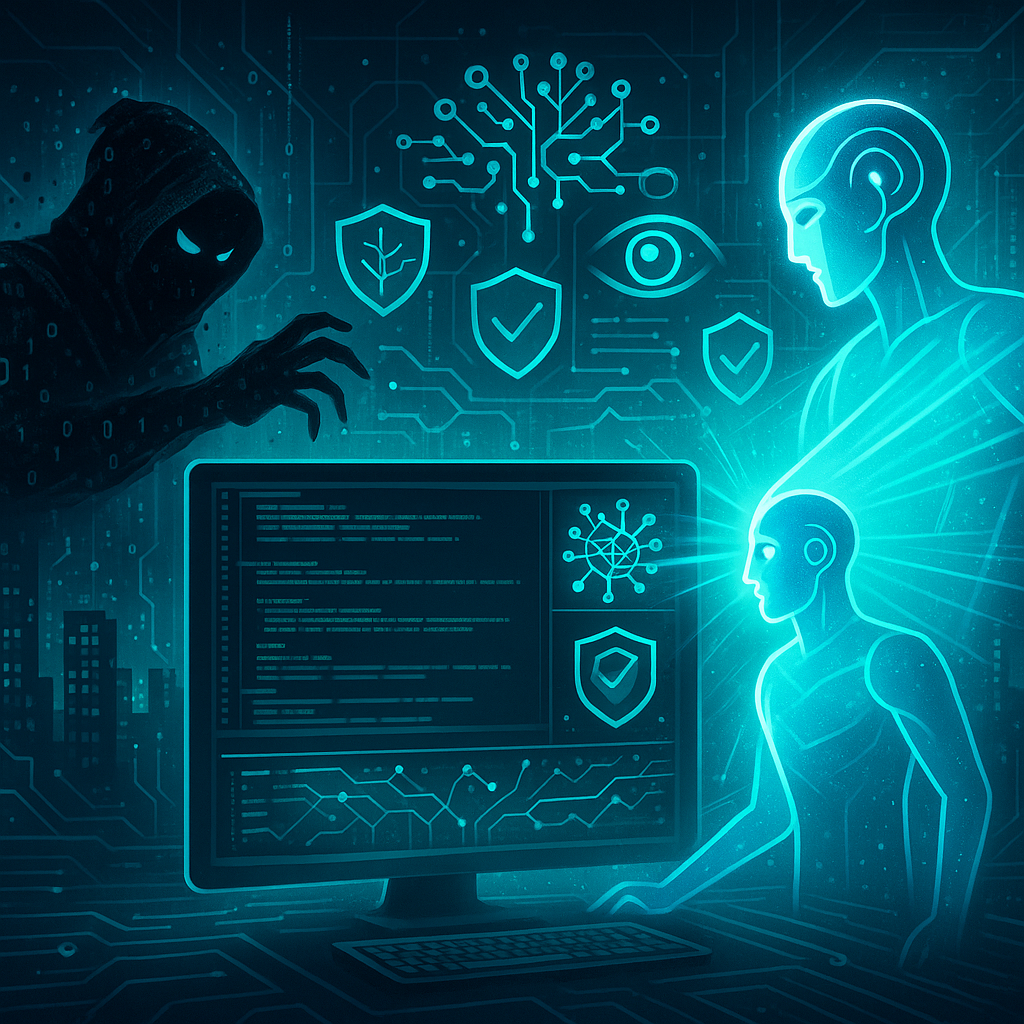Artificial intelligence (AI) is rapidly transforming the digital landscape, and nowhere is its influence more profound than in the realm of cybersecurity. As organisations and individuals become increasingly reliant on digital systems, the stakes for protecting sensitive data and critical infrastructure have never been higher. AI is both a double-edged sword in this context—empowering defenders with new tools while simultaneously arming cybercriminals with unprecedented capabilities. Let’s explore how AI is reshaping cybersecurity, the threats it introduces, and the innovative solutions it offers.
The Dark Side: AI-Driven Cyber Threats

AI’s ability to process vast amounts of data, learn from patterns, and adapt to new information makes it a powerful ally for cyber attackers. Here are some of the most pressing threats:
1. Automated and Sophisticated Attacks:
AI enables attackers to automate the process of identifying vulnerabilities, crafting phishing emails, and launching attacks at scale. Machine learning algorithms can analyse social media profiles and company websites to create highly personalised spear-phishing campaigns that are far more convincing than traditional spam.
2. Evasion Techniques:
Malware powered by AI can learn to evade detection by security systems. For example, AI can modify malicious code in real time to bypass antivirus software or mimic legitimate user behaviour to avoid triggering alarms in behavioural analytics systems.
3. Deepfakes and Social Engineering:
AI-generated deepfakes—hyper-realistic audio, video, or images—can be used to impersonate executives, manipulate public opinion, or blackmail individuals. These tools make social engineering attacks more convincing and harder to detect.
4. Adversarial Attacks on AI Systems:
Ironically, as defenders deploy AI to protect systems, attackers are developing methods to fool these very algorithms. Adversarial attacks involve subtly altering data inputs to mislead AI models, potentially causing them to misclassify threats or allow malicious activity.
The Bright Side: AI as a Cybersecurity Solution

While AI introduces new risks, it also offers powerful solutions that are revolutionising the way we defend against cyber threats:
1. Threat Detection and Response:
AI excels at analysing massive datasets in real time, identifying anomalies, and flagging suspicious activity that would be impossible for human analysts to catch. Machine learning models can detect zero-day attacks, insider threats, and advanced persistent threats by recognising subtle deviations from normal behaviour.
2. Automated Incident Response:
AI-driven security platforms can automate responses to certain types of attacks, such as isolating compromised devices, blocking malicious IP addresses, or rolling back unauthorised changes. This rapid response capability is crucial in minimising damage and reducing the window of vulnerability.
3. Predictive Analytics:
By continuously learning from new data, AI can anticipate emerging threats and recommend proactive measures. Predictive analytics helps organisations prioritise vulnerabilities, allocate resources efficiently, and stay ahead of evolving attack techniques.
4. Enhanced Authentication:
AI-powered biometric systems—such as facial recognition, voice analysis, and behavioural biometrics—offer more secure and user-friendly authentication methods. These systems are harder to spoof and can adapt to users’ changing behaviours over time.
Striking the Balance: The Future of AI in Cybersecurity
The battle between cyber attackers and defenders is an ongoing arms race, and AI is the latest—and perhaps most significant—battleground. To harness AI’s potential while mitigating its risks, organisations must:
- Invest in robust AI-driven security solutions and continuously update them to counter new threats.
- Foster collaboration between cybersecurity experts, AI researchers, and policymakers to develop ethical guidelines and best practices.
- Educate employees and users about AI-powered threats, such as deepfakes and advanced phishing, to build a culture of vigilance.
Ultimately, the impact of AI on cybersecurity will depend on how effectively we leverage its strengths while anticipating and countering its misuse. By staying informed and proactive, we can ensure that AI remains a force for good in the ongoing fight to secure our digital world.


Leave a Reply